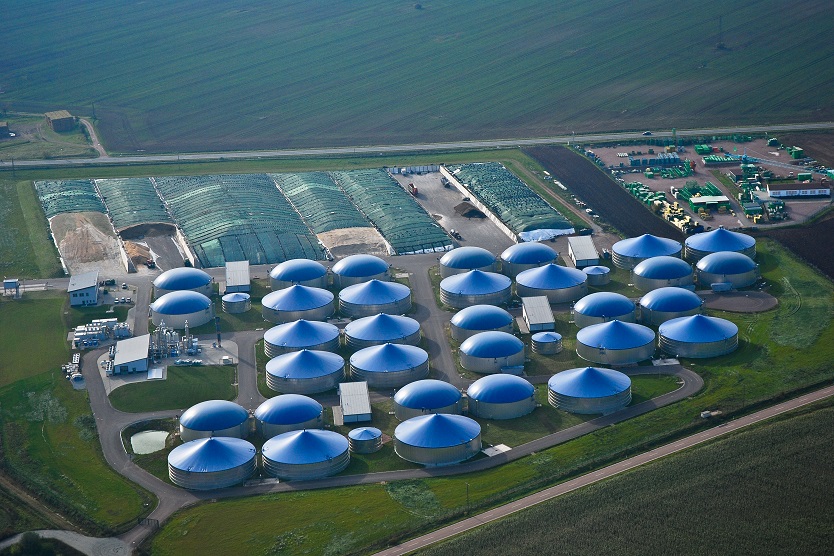
The KIT-team discovered that accumulators in hemispherical shapes are more weather-resistant and could triple storage capacity.
© WELTEC BIOPOWER GMBH
Biogas plants produce large quantities of methane from agricultural residues, which is typically then stored in membrane tanks on site to be used later as an energy source. This cycle works well in theory, but these domed or flat format diaphragmic accumulators have been criticised as the current models spring leaks, releasing methane into the atmosphere, which has a climate-warming effect.
Two years ago, the Karlsruhe Institute of Technology (KIT) received funding from the Federal Ministry of Food and Agriculture (BMEL) to find out more about the factors causing these tanks to leak and fail and to improve upon their design, and now the results are in.
Working with the three industrial partners Technet, Seybold and Wacker Ingenieure, the KIT team built a walk-in test facility (without biogas) with a two layer textile cover stabilised by internal pressure, to monitor the behaviour of the system during different seasons and weather, using pressure sensors and cameras. They found that conventional accumulators are highly sensitive to wind, heat and cold and react differently according to how full they are. They also discovered that hemispherical shapes were more weather-resistant and furthermore could triple storage capacity.
The findings have been handed to the BMEL with recommendations for modernising these systems, which play an important role in Germany’s transition to renewables as they store biogas which can be converted into electricity to make up for fluctuations in wind or solar power.


